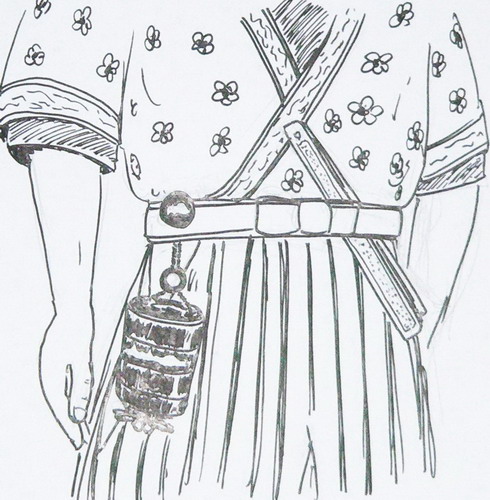INRO, NETSUKE AND OJIME JAPANESE TINY SCULPTURES
INRO, NETSUKE VE OJIME JAPON KÜÇÜK HEYKEL SANATI
What is inro?
An inro (印籠) was a case for holding small objects. Because traditional Japanese garb lacked pockets, objects were often carried by hanging them from the obi, or sash. Most types of these sagemono were created for specialized contents, such as tobacco, pipes, writing brush and ink, but inro were suited for carrying anything small. Consisting of a stack of tiny, nested boxes, inro were most commonly used to carry identity seals and medicines. Inro were made of a variety of materials, including wood, ivory, bone, and lacquer. Lacquer was also used to decorate inro made of other materials. Inro, like the ojime and netsuke they were associated with, evolved over time from strictly utilitarian articles into objects of high art and immense craftsmanship.
Ref. Bushell, Raymond The Inro Handbook, Weatherhill, 2002
This entry has been taken from Wikipedia
Inro nedir?
Inro küçük nesneleri içinde saklamaya yarayan bir muhafazadır. Geleneksel Japon giysisinde cep olmadığından, üstte taşınması gereken nesneler bele sarılı kuşağa (obi) asılarak taşınırdı. Sagemono denilen bu muhafazalar tütün, pipo, yazı fırçası ve mürekkep gibi özel amaçlar için üretilmiş nesnelere uygun olarak tasarlanırdı, ama inro sadece küçük nesneleri taşımak ve korumak üzere yapılmıştır. Inrolar birbirine geçen küçük bölmelerden oluşur ve çoğu kez kişisel mühür ya da ilaç konulmak üzere kullanılırdı. Inro çeşitli malzemelerden yapılır bunlar arasında ahşap, fildişi, kemik ve lake en sık rastlananlarıdır. Lake bir başka malzemeden yapılmış bir inroyu dekore etmek üzere de kullanılmıştır. Inroyu tamamlayan iki önemli unsur daha vardır, biri netsukedir, netsuke inronun bağlı olduğu ipin en ucunda durur ve kuşağa takılır, diğeri ise ojimedir, ojime inro ile netsuke arasında bulunur ve iki ucundaki delik sayesinde inronun mesafesinin ayarlanmasını sağlar. Inro, ojime ve netsuke önceleri pratik amaçlar için üretilirken zamanla sanat değeri taşıyan ve yüksek bir işçilik gerektiren heykellere dönüşmüştür.
Kaynak: Ref. Bushell, Raymond The Inro Handbook, Weatherhill, 2002
Bu madde Wikipedia'dan alınarak tercüme edilmiştir.

Inro, netsuke ve ojimenin geleneksel Japon giysisinde taşınma şekli
![]()